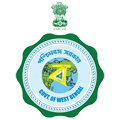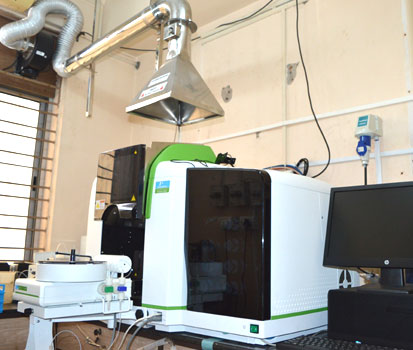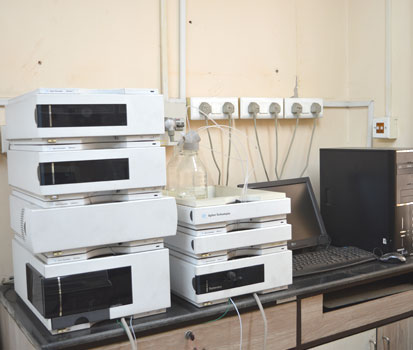
INSTITUTE OF ENVIRONMENTAL STUDIES
& WETLAND MANAGEMENT (IESWM)






Since inception, the Institute has been striking a balance between man and the environment. With the passage of time, IESWM has expanded its activities in the field of water quality monitoring, soil and water pollution research, investigation studies of the agricultural produce and fishes which are commercially distributed, harvesting of rainwater (roof top), municipal waste management, hazardous waste management, biodiversity assessment and conservation, and so on.
Till date, the institute has completed more than 30 projects successfully along with the installation of the rainwater harvesting system in different government and private schools, colleges and universities in different districts of West Bengal.
Technology innovation serves to bring about human growth and comfort in life but also causes environmental degradation, biodiversity loss, and irresponsible use of natural resources. The Institute has a scientific laboratory for chemical analysis which enables to identify a wide range of contaminants in the samples of soil, water, vegetable, fish etc.. It has been designated as a referral laboratory by UNICEF to aid the investigation of arsenic pollution in groundwater. The institute is also furnished with some of the most sophisticated instruments like Atomic Absorption Spectrometer (AAS) with the assemblage of three techniques namely graphite furnace, flame and flow injection, High-performance liquid chromatograph, UV-Vis spectrophotometer, total nitrogen analyzer etc.
The microbiology laboratory at the Institute helps in the identification of the microbes that generally act as the indicator towards the quality of the water and soil for ecologically vulnerable places.
Agriculture continues to be the economic backbone for the state of West Bengal. Even with all of the advancements in irrigation, it is still a weather and climate-dependent variable. Moreover, during the last few years, the vegetables are found to be one of the potential sources of the heavy metals according to published peer-reviewed articles. Thus, the Institute took the initiative and presently working on the investigation of the quality of the agricultural crops and commercial vegetables and is trying to map the same in all the districts of the state. In addition, identification of the contamination hotspots and the potential threats to the human population (if any) due to consumption of such vegetables grown in these areas are also being performed.
Day by day, it is becoming more evident that ecological security is the only answer for social security, human development and sustainable growth. IESWM has to play a more important role in the coming days for guaranteeing environment security of this State in particular and the country as a whole. Thus, IESWM as a whole works on diversified aspects of the environment and proceeding towards a proper management and conservation of the natural resources.
| Sl. No | Name of the Instruments |
| 1 | Single pan Electronic Balance-Range 200gm |
| 2 | Single pan Semi-micro Balance |
| 3 | Rough Balance |
| 4 | Millipore Milli-Q Water Purification System |
| 5 | Millipore Filtering Unit |
| 6 | Refrigerator |
| 7 | Deep Freezer |
| 8 | Freezer, -85°C |
| 9 | Nitrogen Analyser, KelPlus |
| 10 | Turbidity meter |
| 11 | Moisture Analyzer |
| 12 | Flame photometer |
| 13 | Conductivity meter |
| 14 | Dissolved-Oxygen-Meter |
| 15 | BOD incubator with shaker |
| 16 | Anemometer |
| 17 | UV-VIS-Spectrophotometer |
| 18 | Atomic Absorption Spectrophotometer with graphite furnace (GF- AAS) |
| 19 | High Performance Liquid Chromatography (HPLC) |
| 20 | Portable Multi-parameter Water Quality Analyzer |
| 21 | Laminar-flow Work Station |
| 22 | Autoclaves |
| 23 | Bacteriological Incubators |
| 24 | Water Bath |
| 25 | Hot Air-oven |
| 26 | Vacuum Pump |
| 27 | Mixer cum Grinder |
| 28 | SLR Camera with macro zoom lens |
| 29 | Camera Stand |
| 30 | Binocular |
| 31 | Stirrer |
| 32 | Hot Plate |
| 33 | Fume Chamber |
| 34 | Rotary- Vacuum Evaporator with Thermostatic Bath and Cooling System |
| 35 | Muffle Furnace |
| 36 | Table Top Centrifuge |
| 37 | Microprocessor Controlled Table Top Acid Digestor Unit |
| 38 | Table Top Temperature Controlled Digestion system |
| 39 | Binocular Microscope with camera attachment |
| 40 | Inverted Compound Microscope with Digital Photography Facility |
| 41 | Water Sampler |
| 42 | Colony Counter |
| 43 | Plankton Net |
| 44 | Dust Sampler |
| 45 | Electrophoresis Apparatus |
| 46 | Sedgewick Rafter Counter |



